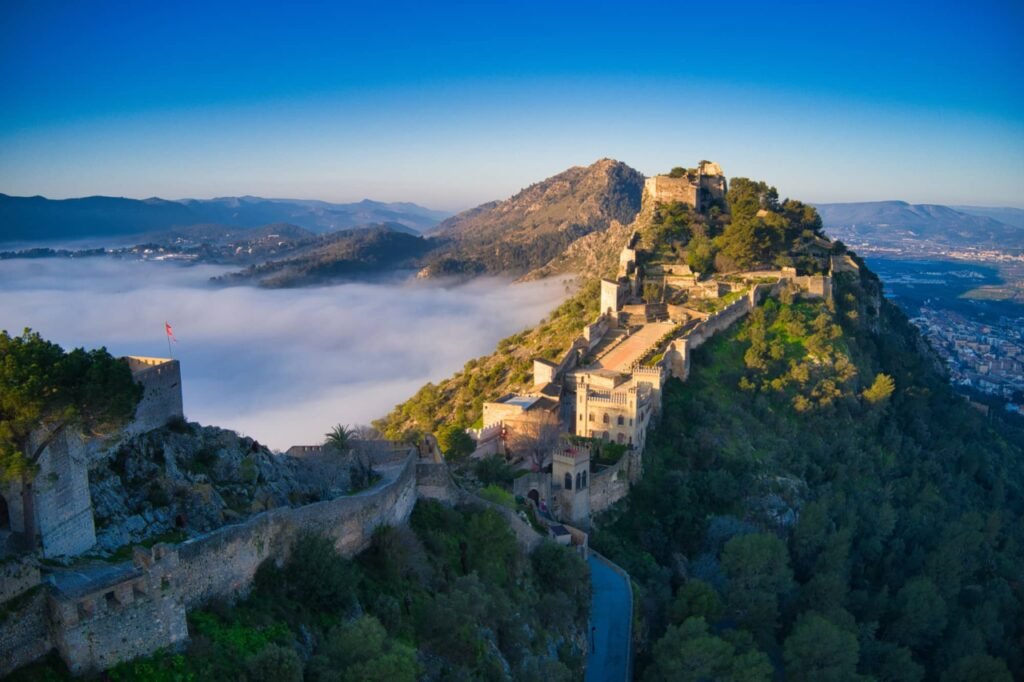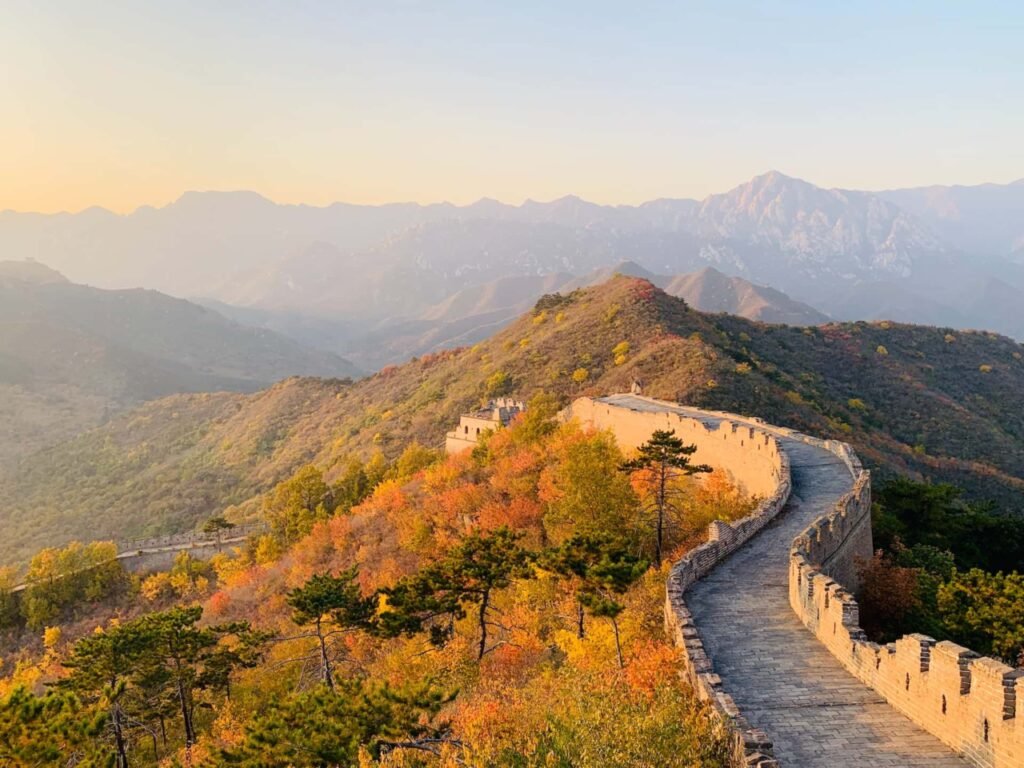The Great Wall of China, an architectural surprise spanning hundreds of kilometres, is a testament to the grandeur of historical Chinese civilization. The conic shape has captivated the sector for centuries. This article can delve into the rich history, design, significance, and myths surrounding the Great Wall. We will also provide insights for those planning to visit this monumental wonder.
Introduction
The Great Wall of China, acknowledged in Chinese as the Long Wall, is a chain of fortifications constructed over centuries to guard China from invasions. It holds a substantial vicinity within the records and subculture of China, attracting hundreds of thousands of travelers annually. Let’s embark on an adventure via time to find this architectural marvel’s secrets, techniques, and testimonies.

History of the Great Wall of China
-
Construction and Purpose
The production of the Great Wall started as early as the 7th century BC; however, essential construction efforts occurred during the Qin Dynasty (221-206 BC) and the following dynasties. Its number one motive turned to guard the Chinese Empire against raids and invasions via way of means of nomadic tribes from the north, along with the Mongols and Xiongnu.
-
Different Dynasties’ Contributions
As different dynasties rose and fell, each left its mark on the Great Wall. The Han Dynasty (206 BC – 220 AD) expanded the wall using rammed earth and stone. During the Ming Dynasty (1368-1644 AD), significant reconstruction and extension of the division took place, resulting in the version we see today.
Structure and Design of the Great Wall
-
Wall Materials and Techniques Used
The Great Wall was constructed using various materials, including stone, brick, wood, and compacted dirt. Different materials were used depending on the location and the resources that were accessible. The workers employed advanced procedures, such as stacking bricks with sticky rice paste and including other reinforcing techniques.
-
Watchtowers and Fortifications
The wall featured watchtowers strategically positioned to provide surveillance and act as defensive structures. These watchtowers allowed the guards to spot approaching enemies and communicate signals across vast distances. Some wall sections also included barracks, garrison stations, and beacon towers.
Significance and Cultural Importance
-
Symbol of Chinese Civilization
The Great Wall of China holds immense cultural and historical significance for the Chinese people. It represents the resilience, ingenuity, and unity of the Chinese civilization. The wall is seen as a symbol of protection, national pride, and the extraordinary achievements of the ancient Chinese empire.
Visiting the Great Wall of China
-
Popular Sections for Tourists
The Great Wall has several portions accessible to tourists, each offering a unique experience. The Badaling section near Beijing is the most well-known and accessible. Other popular areas include Mutianyu, Jinshanling, and Simatai. These sections offer breathtaking views, preserved watchtowers, and diverse landscapes.
-
Tips for a Memorable Visit
Think about how to maximize it with the following suggestions: for your trip to the Great Wall of China:
- Select an area that most closely aligns with your interests—physical limitations.
- To avoid crowds, schedule your visit for the week or during a slower time of year.
- Dress comfortably and put on walking and climbing-friendly shoes.
- Bring sunscreen, a hat, and a drink with you as protection from the sun.
- Follow the approved walkways and show respect for the wall’s historical value.
Myths and Legends Surrounding the Great Wall
-
Tale of Visibility from Space
Contrary to famous belief, the Great Wall of China is only sometimes seen from an area with the bare eye. This false impression, in all likelihood, stems from a misinterpretation of the phrase “seen from the moon” via way of means of early astronauts. Nevertheless, the wall’s enormous scale and historical importance make it an awe-inspiring sight from the ground.
-
Stories of Supernatural Protection
The Great Wall has been linked to legends of mystical defense throughout history. Legends claim that ethereal beings, like dragons, defend the wall and repel intruders. These tales enhance the already intriguing narrative of the Great Wall with a sense of mystery and magic.
Conservation and Challenges
-
Preservation Efforts
Preserving the Great Wall of China presents numerous challenges due to its extended length and exposure to natural elements. In collaboration with organizations and experts, the Chinese government has undertaken restoration projects to conserve and protect this cultural treasure. These efforts involve repairing damaged sections, preventing erosion, and educating visitors about the importance of preservation.
-
Environmental Impact and Restoration Projects
The conservation of the Great Wall also involves addressing environmental concerns. Increased tourism, urban development, and climate change threaten the wall’s integrity. Efforts are being made to balance preservation and sustainable tourism, ensuring the Great Wall’s survival for future generations.
Conclusion
The magnificent Great Wall of China is a feat of engineering and a representation of the grit of earlier civilizations. It continues to lure travelers from throughout the world because of its significance in terms of both history and culture and breathtaking scenery. Whether you travel to study the Great Wall’s enormous archives or to take in its majestic presence, the Great Wall guarantees a fantastic experience.
FAQs for The Great Wall of China
How long is the Great Wall of China?
The Great Wall of China is approximately 13,171 miles (21,196 kilometers) long. It spans various terrains, including mountains, plateaus, and deserts.
When was the Great Wall of China built?
Construction of the Great Wall of China began as early as the 7th century BC and continued for centuries. The most significant construction occurred during the Ming Dynasty (1368-1644 AD).
Why was the Great Wall of China built?
The Great Wall of China was built for multiple purposes. Its primary function was to defend China's northern borders from invasions by nomadic tribes, such as the Mongols and Xiongnu. It also served as a symbol of national unity and prestige.
Can visitors walk on the Great Wall of China?
Yes, visitors can walk on several sections of the Great Wall of China. Some areas are easily accessible and well-maintained for tourists, allowing them to experience the magnificence of this ancient engineering marvel firsthand.
Rate the article ( The Great Wall of China: An Icon of Ancient Engineering )How was our article?
0








